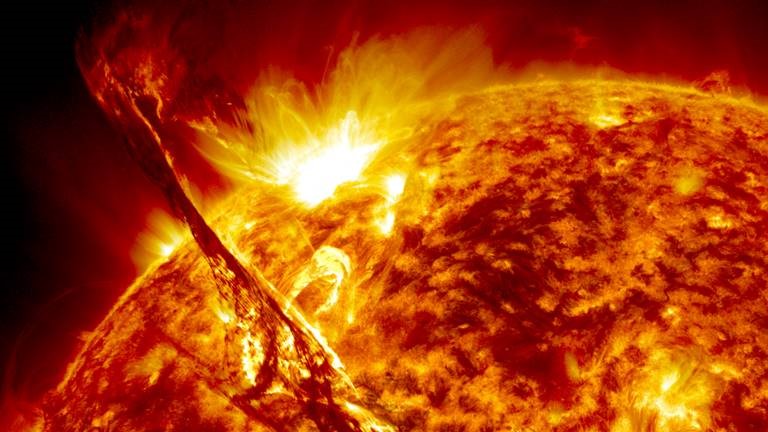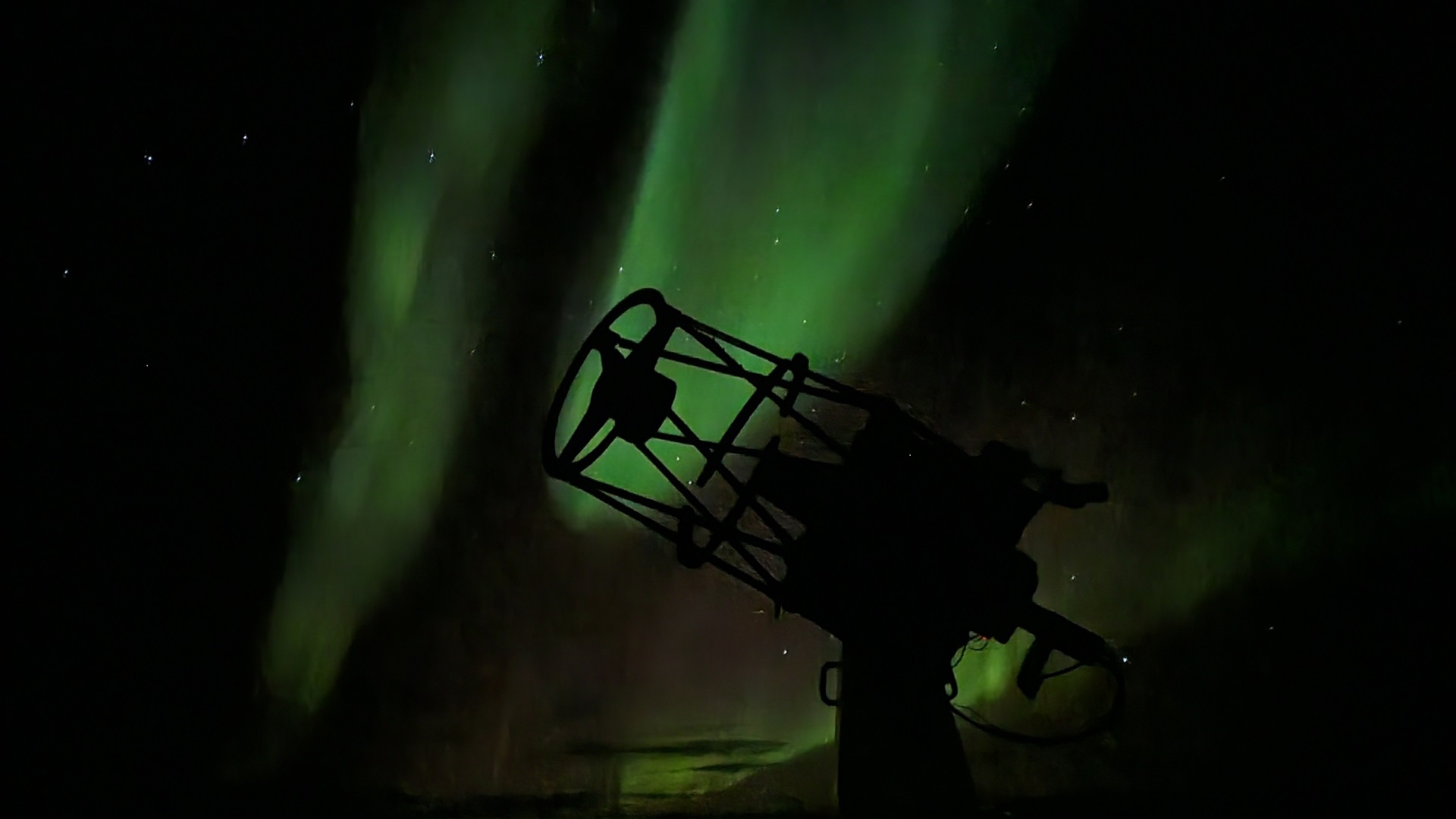Space weather and space safety

This research area is focuses on activities and projects aimed at identifying, understanding, monitoring, and mitigating threats originating from space against planet Earth, life, human technology and infrastructure. The main Space Safety threats are considered to be: Space weather, Near-Earth Objects (asteroids and comets), man-made space objects (satellites and debris) and particle radiation.
Space weather
Space weather describes the dynamic conditions in the Earth's outer space environment, driven by the activity of the Sun. Violent eruptions on the Sun create space weather effects which can disturb, degrade or in the worst case destroy systems in both space and on the ground such as communications, navigation and power supply.
Near-Earth Objects
Larger Near-Earth Objects hitting Earth – either asteroids or comets – can survive the extreme heat generated when passing the atmosphere and create damage or destruction on the ground. This can happen either by a mid-air-explosion for smaller objects or a direct impact for larger objects. Large impacts are very rare, but have a potentially planet-wide devastating effect.
Man-made space objects
Currently the number of man-made space objects in orbit around Earth is increasing – both operational satellites, but also larger and smaller pieces of space debris. This development poses an ever-increasing threat to our space-based infrastructure and our free, unhindered access to space which is essential for our modern society.
Particle radiation
Earth is continuously bombarded by charged particles from space. Some of these particles come from the Sun, whereas particles with extremely high energy originate from outside our Solar System: so-called Cosmic Rays. This particle radiation can affect space-based systems, but also have consequences for both humans and equipment (especially electronics) during high altitude flights in the polar regions.
Currently most activities and projects at the Geomagnetism and Geospace Division at DTU Space are related to space weather but several projects addressing the other threat areas are underway.
Ongoing projects include:
SWADO: Space Weather Forecasting for Arctic Defence Operations
Funding: The Danish Ministry of Defence Acquisition and Logistics Organisation
Space weather describes the dynamic conditions in the Earth's outer space environment, in the same way that "weather" refer to conditions in Earth's lower atmosphere. Space weather includes events on the sun, in the solar wind, in near-Earth space and in our upper atmosphere (the ionosphere). Space weather affects both communication, positioning and monitoring assets, and the SWADO project investigates the possibility of establishing an operational space weather forecasting service for the Arctic with a special focus on Greenland.
A key element is to examine how observations from Global Navigation Satellite Systems (GNSS) such as the American GPS and the European Galileo system can be used in conjunction with geomagnetic observations to provide better estimates of ionospheric parameters. DTU Space has upgraded seven of its 18 magnetometer stations along the coast of Greenland, so that they can participate in the observational system, and this infrastructure has been supplemented with eight new GNSS stations equipped with advanced receivers, specially designed for ionospheric parameter monitoring. SWADO is a collaboration between DTU Space, Elcanic A/S, and RadioLab Consulting.

SWESNET: Space Weather Service Network
Funding:
ESA Space Safety Programme
The Space Weather Service Network in the ESA Space Safety programme consists of five expert service centres that provides crucial information on the space weather situation. The network is divided into 5 different expert service centres: Solar Weather, Heliospheric Weather, Space Radiation, Ionospheric Weather and Geomagnetic Conditions. DTU Space are the coordinator for the Geomagnetic expert service center, a center that currently consists of nine expert groups from different countries in Europe, that provides products related to near-Earth space weather. DTU Space contributes with products such as storm risk forecast, geomagnetic data, geomagnetic indices (K index, PCN index), and polar electrojet monitoring over Greenland and the Faroe Islands.
Read more
S2 Center
This area focuses on activities and projects aimed at identifying, understanding, monitoring and mitigating threats originating from space against planet Earth, life, human technology and infrastructure. Space Safety threats are considered to be:
- Space weather
- Near-Earth Objects (asteroids and comets)
- Man-made space objects (satellites and debris)
- Particle radiation
Currently most activities and projects at DTU are related to space weather but several projects addressing the other threat areas are underway.
The goal of Space Safety at DTU is to strengthen and coordinate DTU Space research within the Space Safety threat areas with the purpose to increase our ability to 1) join and/or lead projects within Space Safety both nationally and internationally; and 2) act as the main knowledge-base in Denmark to give advise on Space Safety related mattes to government bodies, organisations and private industry.
DENASSI: Development and Evaluation of Necessary Arctic Space Safety Infrastructure
Funding:
The Danish Ministry of Defence Acquisition and Logistics Organisation
The number of satellites in orbit around Earth is presently increasing at a very high rate. As a result the amount of mission related space debris is also increasing. Since our space based infrastructure is essential for our modern society to function, it is increasingly important to identify and track man-made space objects to enable effective space traffic management. The purpose of the DENASSI project is to test the feasibility of an optical telescope in Greenland to perform Space Surveillance and Tracking i.e. identification and tracking of space objects (satellites and space debris). This will pave the way for an Arctic Space Safety infrastructure which can lay the foundation for operational Space Safety activities and services. DENASSI is a collaboration between DTU Space, Elcanic A/S, Weibel Scientific A/S and Aarhus University.

